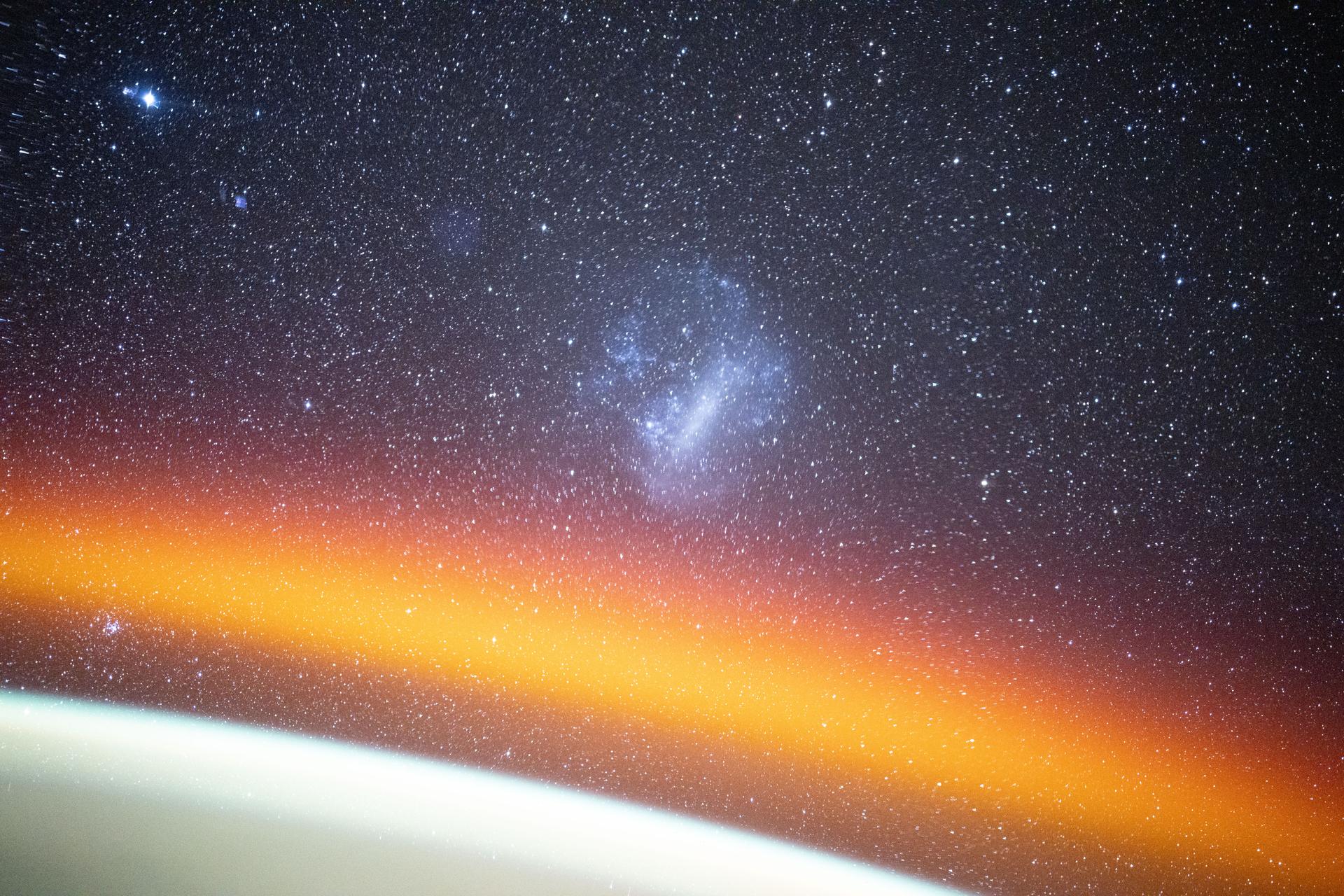
28 Apr 2025
Biotechnology, human health, and space botany kicked off the research week aboard the International Space Station on Monday. The Expedition 73 crew is also preparing for a spacewalk on Thursday to ready the orbital outpost for a new rollout solar array and relocate a communications antenna.
Numerous experiments exploring how blood pressure, eyes, and cells are affected by microgravity packed the schedule aboard the International Space Station on Monday. Scientists will take the unique data and pursue advanced therapies promoting healthy humans on and off the Earth.
Blood pressure checks awaited NASA astronauts Anne McClain and Nichole Ayers on Monday for the CIPHER suite of 14 human research investigations. Ayers began her shift scanning McClain’s chest with the Ultrasound 2 device while electrodes measured her blood pressure. Doctors are observing the arterial structure and function of astronauts to assess the cardiovascular risk of living and working in space.
McClain later installed research hardware inside the Veggie space botany facility for the Advanced Plant Experiment-12 space botany study that will observe how space radiation affects plant genetics. Ayers then peered into medical imaging gear with assistance from NASA astronaut Jonny Kim so researchers could get a glimpse of her optic nerve to identify potential space-caused eye health issues.
Kim also set up physics research hardware inside the Destiny laboratory module’s Microgravity Science Glovebox for the Colloidal Solids experiment that may benefit the pharmaceutical, food, and personal care industries on Earth. The upcoming investigation will observe how soft solids, such as gels, respond to weightlessness and may lead to the design of new materials.
McClain and Ayers are also preparing to exit the space station on Thursday for a six-hour and 35-minute spacewalk. The pair spent an hour on Monday reviewing the steps necessary in the vacuum of space to install a rollout solar array modification kit on the station’s port side truss structure and relocate an antenna that communicates with visiting vehicles. This will be McClain’s third spacewalk, Ayers first, and the 275th in space station program history.
Station Commander Takuya Onishi of JAXA (Japan Aerospace Exploration Agency) split his day between exploring how cells sense gravity and installing hardware containing biological fluid samples. He first relocated cell samples from an incubator into a microscope to observe the mechanism that enables cells to sense the effects of gravity. Results from the Cell Gravisensing investigation may lead to therapies treating space-caused and Earthbound muscle and bone conditions. Onishi then installed cassettes containing fluid samples in the Advanced Space Experiment Processor-4, a research facility that can be shipped back and forth from Earth to space, for the biotechnology study. That investigation may further research and commercialization opportunities in space.
Roscosmos cosmonaut Kirill Peskov set up Earth observation gear and activated a camera to photograph landmarks in Canada and western Africa. Cosmonauts Sergey Ryzhikov and Alexey Zubritsky took a hearing test on Monday inside the Quest airlock using specialized audiometric hardware that eliminates the need to isolate oneself in a soundproof booth. The pair would spend the rest of the day on a variety of electronics and life support maintenance.
[Image]
The Large Magellanic Cloud among a starry backdrop above Earth’s atmospheric glow highlights this long duration photograph from the International Space Station as it orbited 260 miles above the Pacific Ocean off the coast of Mexico.
